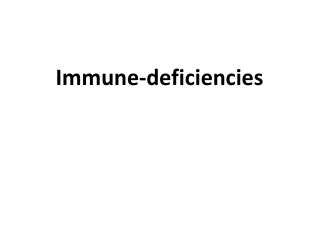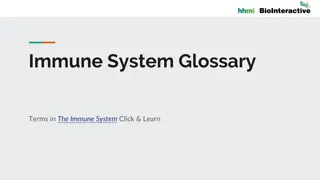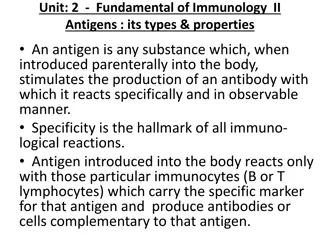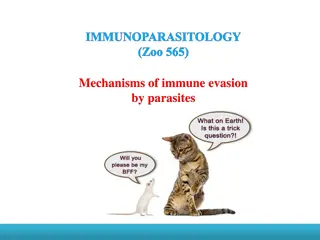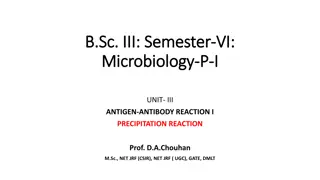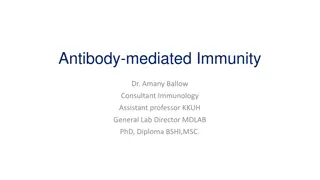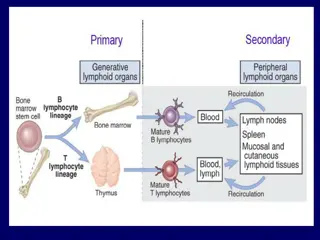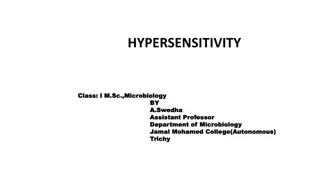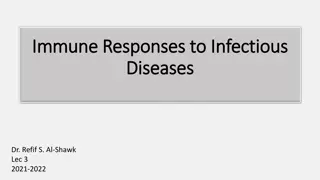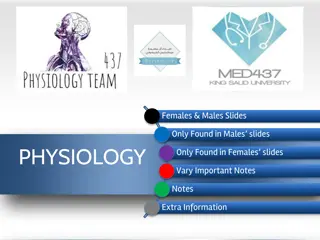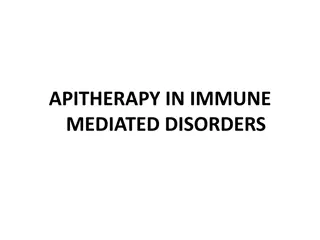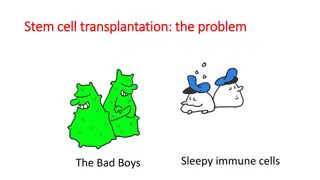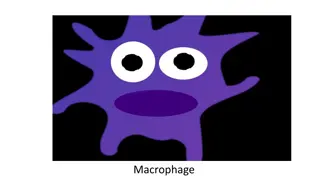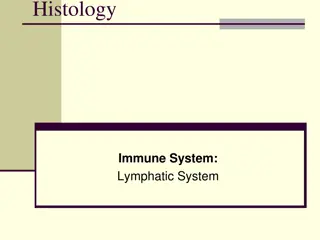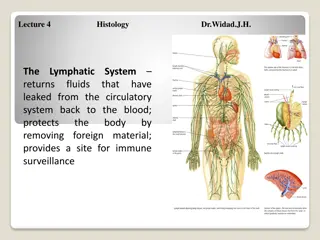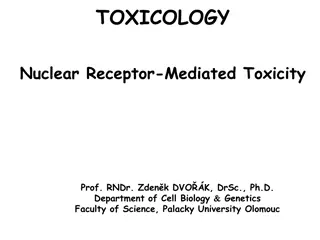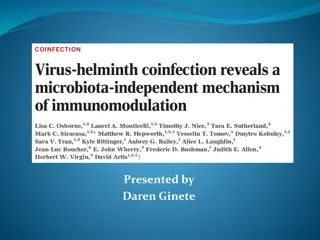Antibody Mediated Immune Response Overview
A comprehensive overview of the antibody-mediated immune response, including types of immune responses, role of humoral and cell-mediated responses, interdependence between CMI and AMI, and initial events for immune response induction.
Download Presentation

Please find below an Image/Link to download the presentation.
The content on the website is provided AS IS for your information and personal use only. It may not be sold, licensed, or shared on other websites without obtaining consent from the author.If you encounter any issues during the download, it is possible that the publisher has removed the file from their server.
You are allowed to download the files provided on this website for personal or commercial use, subject to the condition that they are used lawfully. All files are the property of their respective owners.
The content on the website is provided AS IS for your information and personal use only. It may not be sold, licensed, or shared on other websites without obtaining consent from the author.
E N D
Presentation Transcript
ANTIBODY MEDIATED IMMUNE RESPONSE Dr Priyanka Chaturvedi Assistant Professor
Objectives Concept of immune Response & its types Antigen Presentation & APCs Antibody mediated immune response
INTRODUCTION IMMUNE RESPONSE: A highly coordinated reaction of the cells of immune system and their products.
INTRODUCTION Types of immune response: A) Humoral or Antibody mediated Immune response (AMI) B) Cell mediated immune response (CMI)
Humoral or Antibody mediated Immune response (AMI) Protection of host by secreting Antibodies Antibodies bind and neutralize the antigen (free or bound to any surface) Have no role against Intracellular antigens
Cell mediated immune response (CMI) Crucial in providing protection against intracellular microbes. It is mainly T-cell mediated Other components are: Natural killer (NK) cells, Macrophages & Granulocytes.
CMI and AMI are Interdependent CMI and AMI cannot work individually, but they are highly dependent on each other CMI activated T cells that stimulate the B cells to transform into antibody secreting plasma cells. regulates AMI by releasing cytokines from
CMI and AMI are Interdependent There are few initial events that must take place before the induction of either CMI or AMI. These events are common to both CMI and AMI. These events include: 1) Antigen presentation to helper T cells 2)Activation and differentiation of helper T cells into either TH1 or TH2 subsets.
1. Antigen presentation For induction of immune response, recognition of antigen by T cells is essential T cells can t recognize native and free antigens Antigen containing specific epitopes which are subsequently combined with MHC molecules. 10 is processed into smaller antigenic peptides
1. Antigen presentation Antigen presentation refers to presentation of antigenic peptides to both TH cells and TC cells by complexing with MHC II and MHC I respectively Antigen presenting cells: Strictly refers only to those cells that present the antigenic peptide along with MHC II to TH cells Target cells: Virus infected cells presenting antigenic peptides along with MHC I molecules to Tc cells 11
T CELLS ONLY RECOGNIZE ANTIGEN ASSOCIATED WITH MHC MOLECULES ON CELL SURFACES 12
Antigen presenting cells Professional APCs Non Professional APCs Dendritic cells Macrophages B cells Fibroblasts (skin) Thymic epithelial cells Pancreatic beta cells Vascular endothelial cells Glial cells (brain) Thyroid epithelial cells 13
Antigen processing pathways For induction of immune response (both CMI and AMI) antigens must be presented to TH cells 14
Antigen processing pathways Cytosolic pathway: Endogenous/ intracellular antigen such as viral antigens and tumor antigens are processed and presented along with MHC class I molecules to Tc cells Endocytic pathway: Exogenous antigens ( extracellular microbes and their products) are processed and complexed with MHC class II molecules and presented to TH cells 15
ACTIVATION AND DIFFERENTIATION OF HELPER T CELLS Central event that regulates both cell mediated and antibody mediated immune responses 16
A. ACTIVATION OF HELPER T CELLS Activation occurs in two steps: SIGNAL GENERATION I. II. SIGNAL TRANSDUCTION 17
I. SIGNAL GENERATION Requires of generation of three specific signals: 1. Antigen specific signal 2. Co-stimulatory signal 3. Cytokine signal 18
II. SIGNAL TRANSDUCTION: Initiated at CD4 molecule which interacts with CD3 complex and transmit the signal Activation of TH cells 20
B. DIFFERENTIATION OF HELPER T CELLS: Activated TH cells secrete increased amount of IL-2 as well as IL- 2 receptor IL-2 binds to its receptor on the same TH cell and also on other TH cells and induce the na ve TH cells to proliferate and differentiate TH cells get activated and subsequently differentiate into MEMORY AND EFFECTOR CELLS 21
EFFECTOR T HELPER CELLS Derived either from the na ve TH cells or pre-existing memory TH cells following antigenic stimulus. They are short-lived. Further differentiate into either TH 1 or TH 2 subset 22
EFFECTOR T HELPER CELLS Cytokines secreted by: TH1 cell stimulate Tc cells----CMI TH2 cell stimulate B cells----AMI 23
TH1 cytokines & their functions IL-2 1. Promotes activation of TH and TC cells 2. Activates NK cells to become LAK (Lymphokine-activated Killer) cells 1. Activates the resting macrophages into activated macrophage 2. Activates B cells to produce IgG 3. Promotes inflammation of delayed type of hypersensitivity (along with TNF- ) 4. Inhibits TH2 cell proliferation Enhances phagocytic activity of macrophage IFN- TNF- TH2 cytokines & their functions IL-4 1. Inhibits TH1 cell differentiation 2. Stimulates B cells to produce IgE and also IgG4 & IgG1 1. Enhances proliferation of eosinophils 2. Both IL-4 & IL-5 together provide protection against helminthic infections and also mediate allergic reaction Promotes B cell proliferation and antibody production Inhibits TH1 cell differentiation IL-5 IL-6 IL-10 24
MEMORY T CELLS Derived from activated TH cell Longer life span (months to years) Are in resting stage Following subsequent antigenic stimulus, they become activated and differentiated into effector TH cells 25
Humoral or Antibody-mediated Immune Response (AMI) Antibodies protection to the host are secreted to provide
Antibody-mediated Immune Response AMI occurs through the following three steps: 1. Activation of B cells 2. Proliferation and differentiation of B cells into effector cells and memory cells. 3. Effector function- Secret antibodies by plasma cells
1. Activation of B Cells Antigens that activate B cells are divided into two categories. a) Thymus dependent (TD) Antigen: (most common) TD antigens are processed by APCs presented to TH cells following which the TH2 cells cytokines that in turn activate the B cells.
1. Activation of B Cells b) Thymus Independent (TI) Antigen: They are not processed by APC. They can directly activate B cells without the help of T cell induced cytokines.
1. Activation of B Cells Thymus dependent (TD) Antigen: (most common) It includes: a) Antigen presentation of B cells to activated TH cells b) Signal Induction c) Signal Transduction
Signal Induction Signal-1 - Induced by the cross linking of mIg (membrane immunoglobulin) receptor on B cell membrane with the microbial antigen. Signal-2 - Provided by binding of CD40 on B cell with CD40L on activated TH cells. Signal-3- Cytokine stimulus. Cytokines produced by the activated TH cells bind to specific cytokine receptor on B cells
Antigen presentation of B cells to activated TH cells and signal induction
Signal Transduction Initiated by the B-cell receptor (BCR). Transmits the signal leading to activation of B cells.
Proliferation and Differentiation of B Cells Naive B cells are discharged from the bone marrow and settle in the B cell regions of peripheral lymphoid organs (cortex of lymph nodes & marginal zone of spleen). Primary lymphoid follicles are formed from naive B lymphocytes.
Proliferation and Differentiation of B Cells Following activation of B cells, primary follicles are converted into secondary follicles Secondary follicles bear a germinal center, which in turn has two areas: Dark zone i) ii) Light zone
Differentiation of B cells in secondary lymphoid follicles
Cytokines secreted by TH cells and the respective Ig class/subclass they induce Cytokine(s) Ig class produced IFN- IgG2a or IgG3 IL-5 + TGF- IgA or IgG2b IL-4 IgE or IgG1 or IgG4 IL-2,4,5 IgM IL-4,5,6 + IFN- IgG
Effector Functions of AMI Promotes opsonization Fc Receptors present on phagocyte surface recognize antibody coated microbes, bind to them and that leads to enhanced phagocytosis
Effector Functions of AMI Transcytosis Poly Ig receptors are expressed on the inner surface of epithelial cells They bind to dimers of IgA and multimers of IgM antibodies and transfer them through the cell to their apical surface and into the lumen of an organ (e.g., the intestine).
Effector Functions of AMI Mediates mucosal immunity: Transcytosis of IgA to gut lumen provides mucosal immunity by neutralizing the microbes at local mucosal sites
1. Professional antigen-presenting cells (APCs) include all, except: a. Dendritic cells b. Macrophages c. Fibroblasts (skin) d. B cells
2. Plasma cells are: a. Activated B cells producing cytokines b. Activated T cells producing Immunoglobulins c. Activated B cells producing immunoglobulins d. Activated T cells producing cytokines
3. Which of the following is correct. Cytokines secreted by: 1. TH1 cell stimulate B cells----CMI 2. TH2 cell stimulate B cells----AMI 3. TH1 cell stimulate Tc cells----AMI 4. TH2 cell stimulate B cells----CMI


